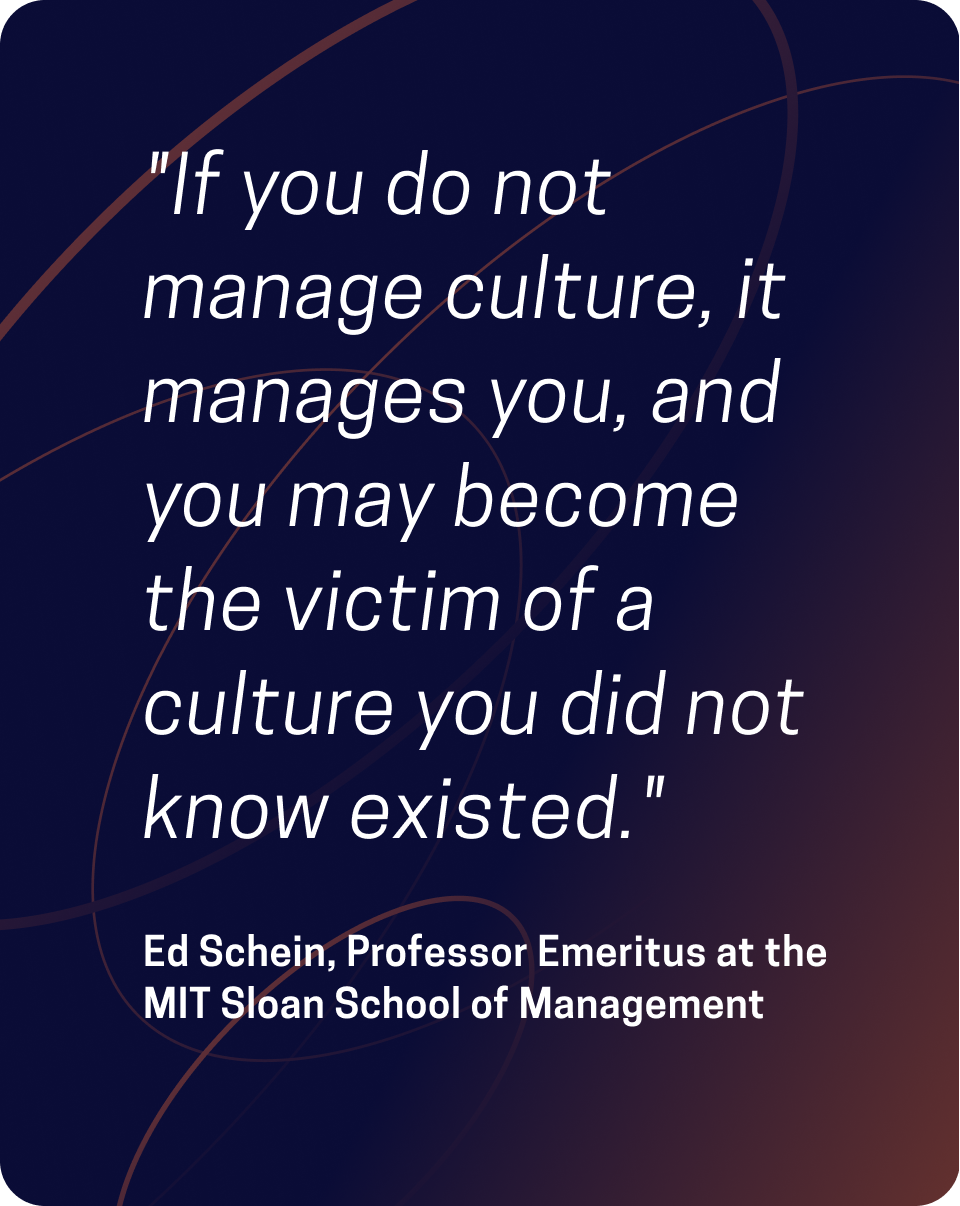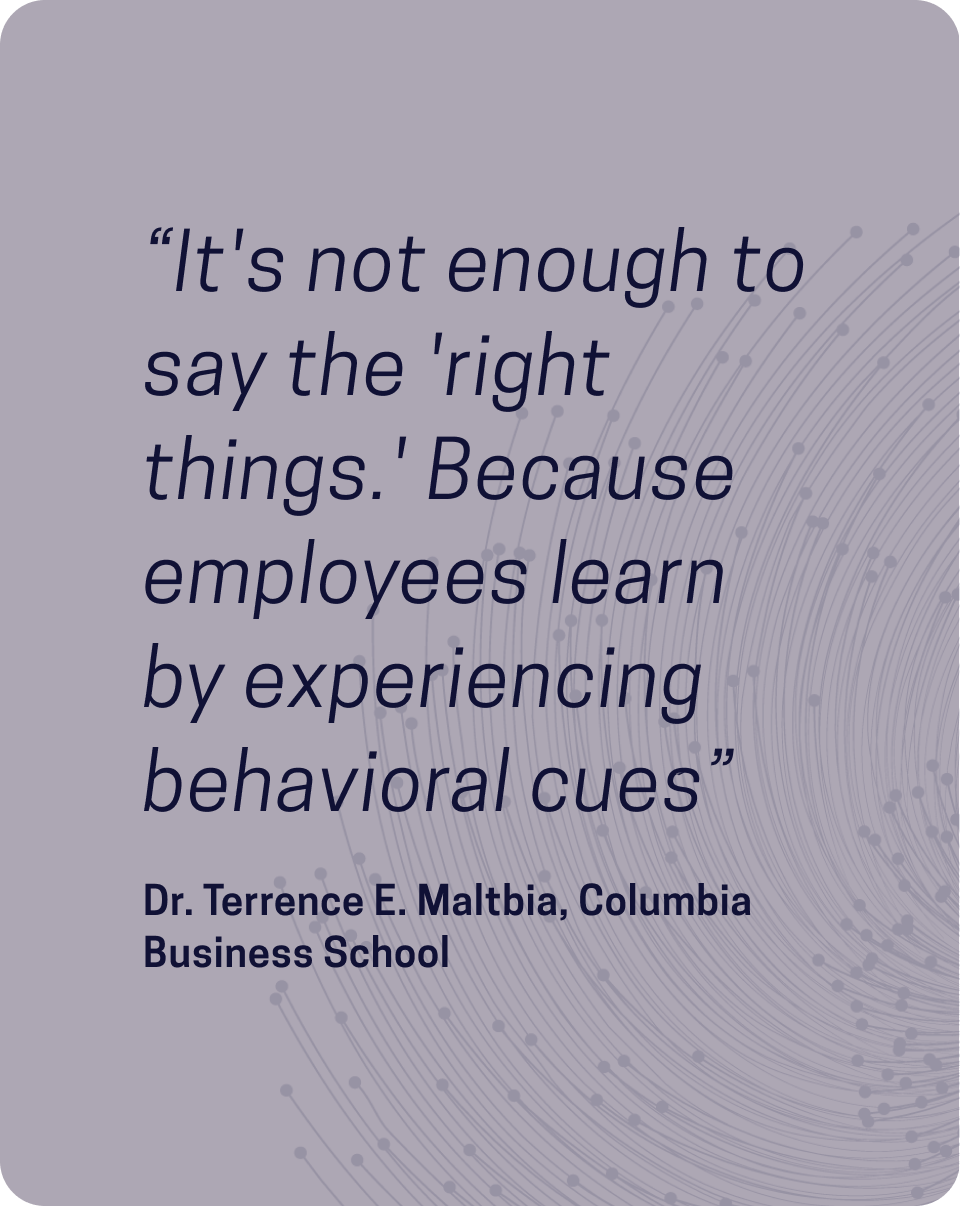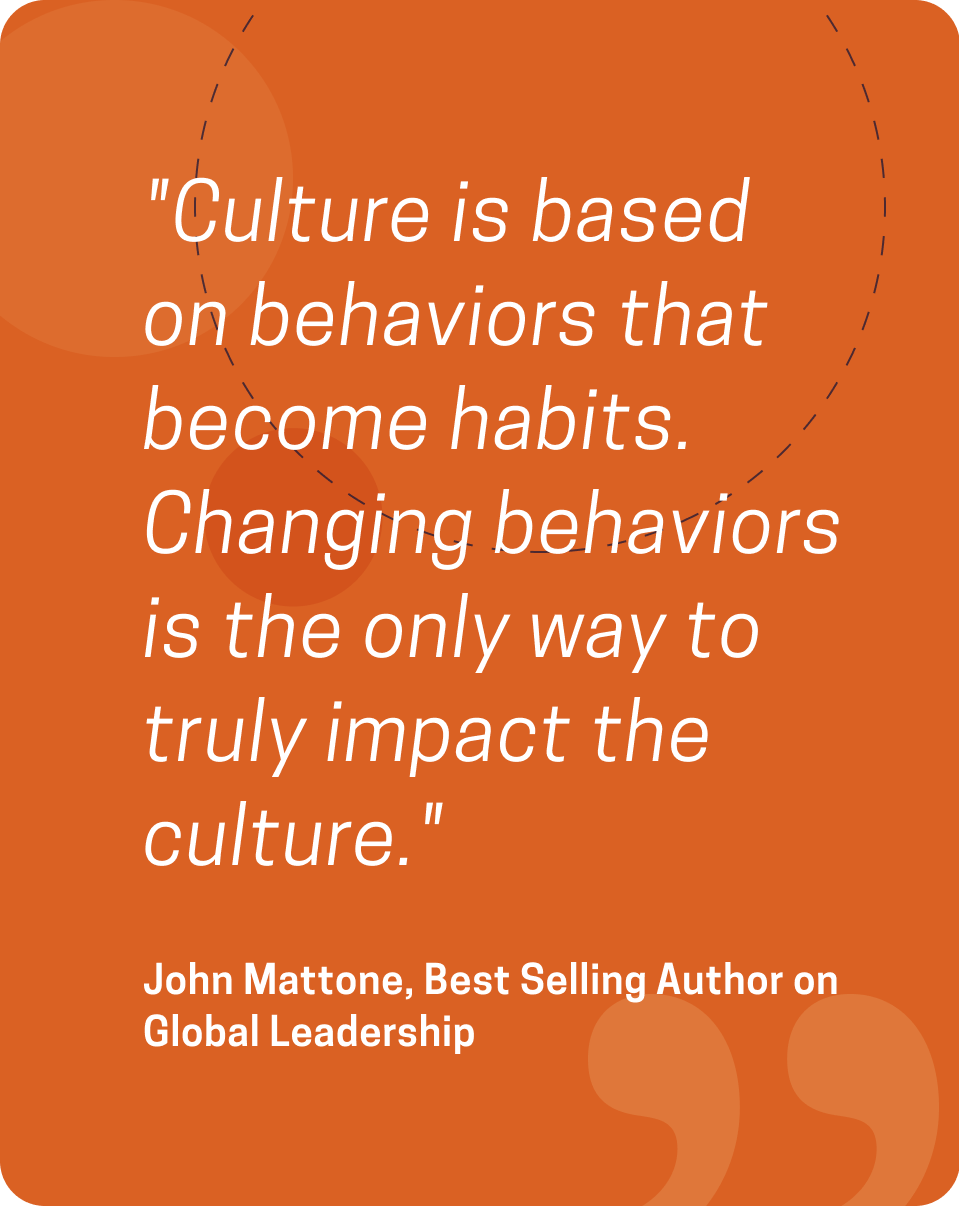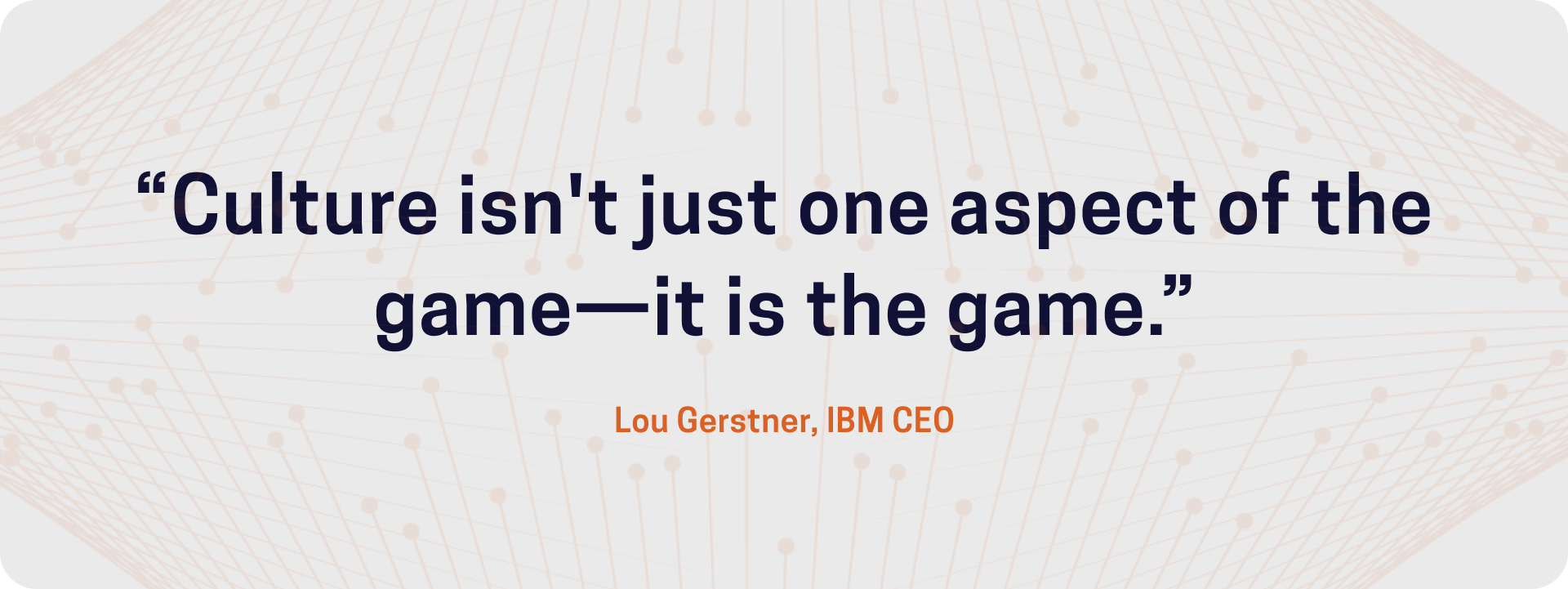At its core, an organization's culture boils down to a shared understanding of "how we do things around here." They are the written and unwritten rules of attitudes, behaviors, and processes that then become engrained over time to shape how employees approach their work, make decisions, and treat one another.
Your company’s culture has enormous implications, yet for all its importance, corporate culture remains an ethereal and elusive force that many leaders struggle to deliberately steer in their desired direction.
Where exactly does culture come from – and how can organizations proactively cultivate their optimal version?
According to Ed Schein, Professor Emeritus at the MIT Sloan School of Management and one of the world's seminal experts on organizational culture, the answer lies with leadership.

"The only thing of real importance that leaders do is to create and manage culture," Schein wrote. "If you do not manage culture, it manages you, and you may become the victim of a culture you did not know existed."
The saying "culture eats strategy for breakfast" indicates that even the most brilliant corporate plans can fall flat if they clash with the workforce's deeply rooted behaviors and mindsets. Failing to account for culture represents a colossal operational blind spot that nullifies the impact of any initiative, regardless of how much money one may throw at the problem.
For example:
- Leaders aiming for innovation often encounter a culture where fear of failure stifles creativity and new ideas.
- We want decisiveness, but our culture values a need for consensus because we worry about being seen as ”mean.”
- In cultures focused on blame, fear of repercussions can hinder personal responsibility and accountability.
- We want people to feel engaged at work, but there are no regular practices of employee recognition.
- Leaders want collaboration, but the company's history is one of insulated departments that take a zero-sum attitude to sharing resources.
Actively shaping corporate culture may be the most vital and lasting imprint leaders can have on their organizations – yet it is also one of the most persistently misunderstood aspects of management.
Too often, leaders view culture through a narrow lens of corporate values statements, office decor, and employee engagement scores. While those elements play a role, the true essence of culture runs much deeper.
Culture Flows from Leadership Behaviors
Cultural norms are ultimately determined by what people can see and what people can sense from the attitudes and behaviors role modeled by an organization’s leadership:
- Which skills and competencies get recognized and rewarded?
- How are decisions made and what factors carry the most weight?
- Who in the organization do we hold up as our examples and role models?
These everyday actions teach and reinforce for people, "This is how we do things here."
While tools and technology can accelerate cultural change, the enduring impact comes from leaders who demonstrate the expected behaviors day in and day out.

"Leaders are the source of organizational culture change," explained Dr. Terrence E. Maltbia of Columbia Business School. "It's not enough to say the 'right things.' Because employees learn by experiencing behavioral cues. They watch to see if the leader's actions align with their words."
For example, at McChrystal Group, one of the cultural norms we hold for our people is to “sweep the sheds.”
A concept from James Kerr's book Legacy focused on the New Zealand All Blacks. The simple yet enduring mantra "sweep the sheds" refers to the practice of team members, including star players, cleaning their own locker rooms after matches. This task is not left to the janitors or support staff; the players do it.
At its core, this principle and the culture it reinforces say, " No one is too big to do the small things that need to be done."
Leader Development to Reinforce Culture
The most impactful way for leaders to evolve their organization's culture is to role model and incentivize behaviors and decision making that align with the ultimate culture they seek to build.
To complement and scale that example, effective leadership development programs reinforce those behaviors you wish to see more of in your organization.
Investing in comprehensive leadership curriculums, coaching, simulations, and other immersive experiences that instill desired leadership principles, behaviors, and decision-making skills represents the clearest path to shaping organizational culture from the inside out.
Benefits of this approach:
- Instills consistent standards for "how we do things here" from the top down
- Translates high-level cultural aspirations into tangible, observable behaviors
- Creates shared language and priorities through common leadership experiences
- Allows deliberate practice, feedback, and accountability on desired behaviors

"Culture is based on behaviors that become habits," argues global leadership authority John Mattone. "Changing behaviors is the only way to truly impact the culture."
When done effectively, leadership development aligns leaders from the C-Suite down on displaying consistent behaviors and mindsets that trickle through the entire organization. It provides a unifying framework of shared language, expectations and priorities. Most critically, it reinforces the key behaviors and ways of thinking that reflect the culture an organization truly wants through practice, feedback and accountability.
Leadership Capabilities for Cultural Alignment
For example, to cultivate a culture of aggressive innovation and data-driven experimentation, you design a program that challenges participants to:
- Synthesize complex data sets to identify new market opportunities that exist right now
- Pitch and sell potentially controversial ideas by persuading others in the organization
- Make tough trade-off decisions around prioritizing resources between core and exploratory initiatives with key leaders in the room
By experiencing these situations first-hand and receiving expert coaching and feedback, leaders expand their entrepreneurial capabilities while simultaneously building the mindsets required to thrive in a dynamic, risk-embracing, innovative culture.
The most impactful leadership curriculums extend far beyond classroom instruction. They are experiences that invite participants to challenge how they see the world and how they can behave while providing them with opportunities for real-world practice of the new skills and mindsets they’ve learned.
While developing a new Human Resources Lifecycle, McChrystal Group researchers found that future-oriented motivation is an essential predictor of retention at all levels. Empowering employees with confidence and knowledge to manage challenges and seize opportunities is a powerful investment in retention and culture.
In essence, effective leadership development is simultaneously an invitation to a new vision of the organization’s culture and working reps for people on the tools needed to create and thrive in that new culture.
This level of immersion is critical, as leadership expert Matt Paese explains:
Changing habits and behaviors happens through personal experiences, not just intellectual understanding. Leaders have to feel the situations and make tough choices aligned to the ideal culture to truly embody the expected mindsets."
Reinforcing the "Why" Behind Cultural Priorities
Of course, even the most immersive leadership development will fall flat if leaders cannot articulate a clear, compelling rationale for prioritizing specific cultural attributes. Leadership development must be clearly linked to business performance.
Tying behaviors to organizational objectives and market realities is crucial. There does not have to be a tradeoff between organizational values and performance. Both can exist simultaneously, and the best organizations find ways to leverage them in the culture they create.
By focusing leadership development on both expanding management skills and instilling behaviors aligned with the desired organizational culture, leaders shape the values, attitudes, and processes that define how every person in the organization operates.
Culture then becomes a force that supports strategy rather than hinders it. It allows leaders to see how individual behaviors shape the broader cultural environment needed for long-term success. It also allows individual employees to know exactly what behaviors and mindsets they need to embrace to contribute to the organization's success with no guessing and misalignment.
As former IBM CEO Lou Gerstner summarized, "Culture isn't just one aspect of the game—it is the game."

For organizations looking to rewrite their cultural playbook, effectively utilizing leadership development may be the highest leverage move to make a lasting difference.
Interested in learning more about Leadership Development with your Team or across the organization to build a high-performance culture?


